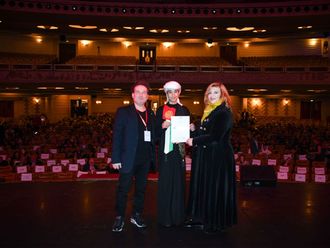A bond can be described as an interest-bearing or a discounted corporate or sovereign or quasi-sovereign security that obligates the issuer to pay the bondholder a specified sum of money (interest), usually at specific intervals (quarterly/bi-annually/annually), and to repay the principal amount (loan) at the agreed maturity.
Bondholders have confirmation of indebtedness from the issuer but do not enjoy corporate ownership privileges, as shareholders do.
Islamic sukuk
A sukuk financing takes place when a set of investors pool in their wealth to invest in accordance with Sharia principles with an aim to make profit which is then distributed pro rata. Unlike bonds, sukuk holders have the ownership rights over the invested asset.
Sukuk al ijara (leasing sukuk)
Various types of sukuks have been developed with the help of extensive combined efforts put in by the Sharia scholars and the Islamic finance experts in order to cater to the vast needs of Islamic investors. However, most commonly used out of them is sukuk al ijara or leasing sukuk.
Structure of sukuk al ijara
Let's examine the structure of sukuk al ijara, which will make the understanding of other sukuks easier. An agreement is reached bet-ween investors and the party interested in obtaining a certain asset on lease from the investors.
Investors acquire the asset in the name of trustee (usually a special purpose vehicle) by pooling in their funds.
The asset could be moveable or immovable but its use must not be opposed to Sharia principles.
The trustee then holds the right of ownership of the asset on behalf of the investors and issues the sukuks (certificates) to them. All sukuks are of equal value.
By virtue of such sukuks, the holders have pro rata undivided beneficial ownership of the asset and the lease rights. The asset is then leased to the interested party, now known as lessee, for an agreed period.
Trustee receives the lease rent from the lessee and distributes it pro rata to sukuk holders. The frequency of the payment of lease rent is pre determined. It could be quarterly, bi-annually or annually.
The basis of lease rent is pre-agreed, however, the rate of lease rent can be fixed for the entire period or variable based upon market forces.
The leasing is done under the concept of lease purchase (ijara muntahia bittamleek) whereby lessee undertakes to purchase the asset at the end of the lease period.
Lease purchase method is suitable for turnkey projects requiring long-term financing. On maturity of sukuk, tied up to the end of lease period, the lessee buys the asset as per his purchase undertaking stated above.
The trustee then makes a final distribution out of the sale proceeds of the leased asset to sukuk holders, returning their investment back.
Pre-requisites of lease agreement
As in the case of the asset necessarily conforming to Sharia, it is equally important that the substance of the lease agreement is drawn up in a manner so as not to violate any Sharia principles.
Summarised below are the basic principles, which should be taken care of while drawing up a lease agreement:
* It is necessary that the leased asset has some usufruct;
* Lease rent must commence from the point the usufruct is handed over to the lessee;
* The asset must be of a nature that it can be used in a halal (permissible) manner;
* Lessor must undertake all the responsibilities of an owner;
* The lease rent mechanism must be clear to the lessee from the beginning; and
* Trustee, acting as an agent for sukuk holders, should be paid a fee for his services.
Tradeability of sukuks
Since sukuks represent the pro-rated ownership of their holders in the leased asset, and not the debt as in case of conventional bond, there is no Sharia reservation on their being fully trade-able.
As such, sukuks can be bought and sold freely in the secondary market, like the shares of a joint stock company.
In such situation, new purchaser replaces the seller in the pro-rated ownership of the leased asset and all the rights and obligations of the seller are passed on to the new buyer. The selling price of the sukuk is determined based on the market forces.
Difference between bond and sukuk
Major difference is that a conventional bond is based on interest whereas sukuk is not. Another stark difference is that the sukuk is asset-based as against conventional bond, which is mostly unsecured and relies on rating.
Furthermore, bond is essentially a form of debt whereby sukuk is issued to finance certain development projects.
Furthermore, a sukuk issuer is aware of its limitation to retain up to a certain amount, in case of the issue being oversubscribed, since the total subscription cannot exceed the value of the leased asset. This self-controlled mechanism in sukuk works as safety valve.
To the contrary, if a bond issue is oversubscribed, the issuer endeavours to retain the maximum possible amount, at times without proper justification. This may prove imprudent, putting the investors' interest in jeopardy.
Sukuk objectives
Following broad objectives can be achieved if the governments of Islamic countries and large corporates from the Muslim world switch to issuance of sukuk, instead of bonds.
Avoidance of riba (interest)
* Diversification of investor base;
* Impetus to growing Islamic financial market;
* Creation of new asset class for Islamic and conventional investors;
* Achieve cost-efficient funding;
* Set benchmark for other similar issues and higher activity at corporate level; and
* Promote trading of Islamic instruments.
Recent success stories
In June 2002, the Government of Malaysia decided to launch its first sukuk al ijara. The decision was taken on an experimental basis, after issuing a number of conventional bonds.
The amount sought was set at $500 million with a green-shoe option (discretion to mop up the oversubscribed amount) of increasing it up to the value of assets, which was ascertained at over $600 million.
The issue was oversubscribed twice at $1.1 billion. However, the value of sukuk deal was increased from $500 million to $600 million, restricted by the underlying assets that were valued at slightly above $600 million.
It is interesting to note that new investors in this issue accounted for about 65 per cent of the overall subscription. The deal was well received by both Middle East and conventional investors. The issue was successfully listed in the Luxembourg Stock Exchange and the Labuan (Malaysia) Financial Exchange.
The Kingdom of Bahrain has also successfully issued sukuk al ijara offerings in quick succession.
Proceeds from these sukuk issues were utilised to finance various infrastructure projects in the country.
These instruments were designed to create additional investment opportunities for financial institutions, institutional investors (including insurance companies), as well as private investors. All the sukuks were listed on Bahrain
Islamic Finance: Sukuk - a viable alternative to bonds
Islamic Finance: Sukuk - a viable alternative to bonds












